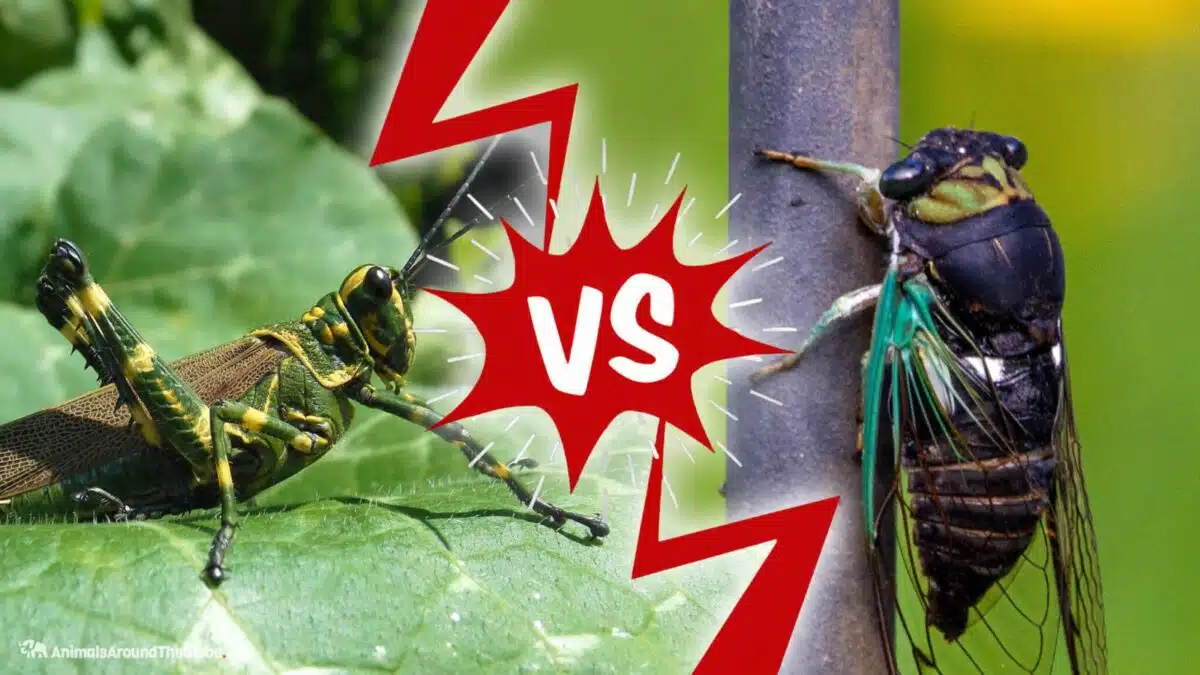Today we’ll be discussing two creatures belonging to the insect family: cicada vs. locust!
When identifying swarming insects on crops, the species “cicada” and “locust” are frequently confused. Despite apparent similarities, these insects are not the same.
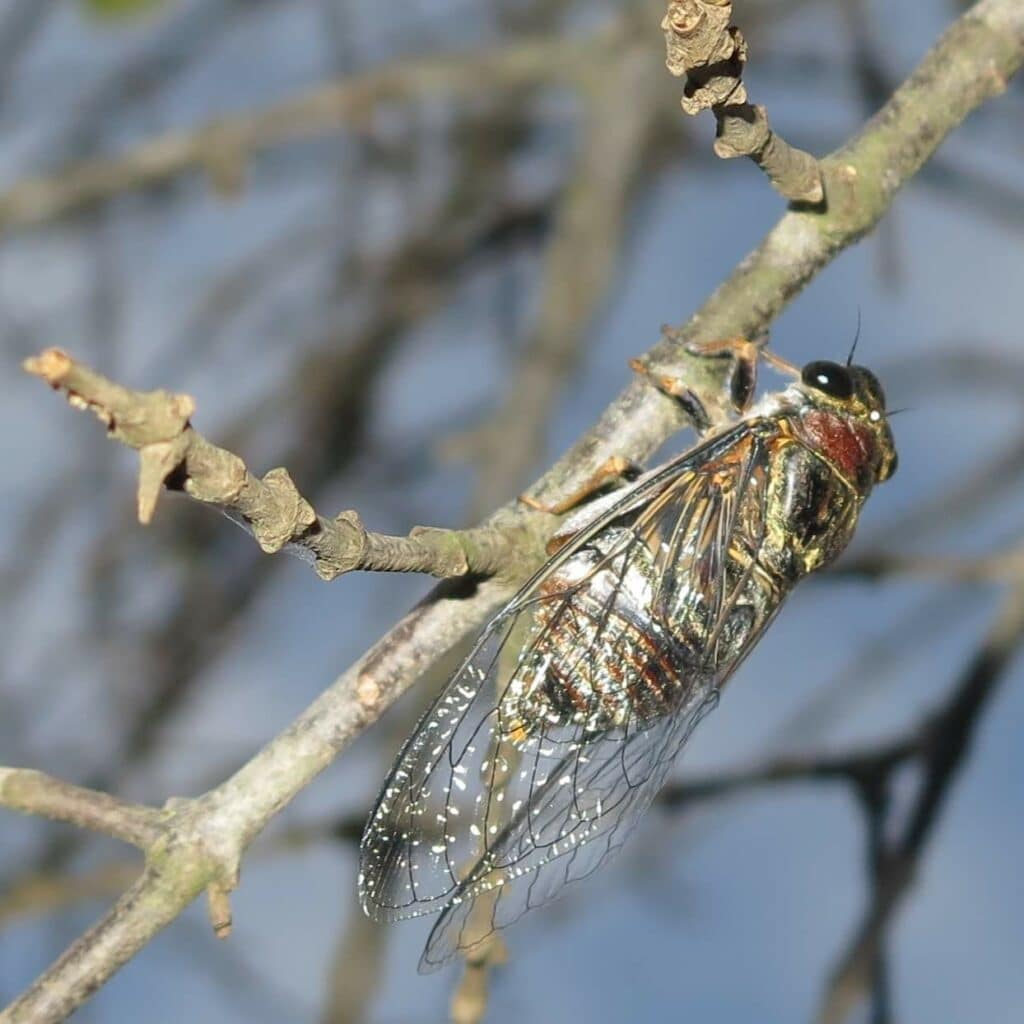
They belong to two different species. Their nymphs’ life spans and habitats vary as well. Cicadas are commonly considered to swarm like locusts. In reality, cicadas do not swarm.
They happen to be in large numbers above ground at the same time. Locusts eat all plant life that comes in their path. However, cicadas do not harm plants in any way. The back legs of locusts are longer and slimmer when compared to Cicadas.
These are the surface-level differences, let’s dig deeper into the cicada vs. locust comparison!
Comparison between Cicada And Locusts:
| Features | Cicada | Locusts |
| Order | Hemiptera (True Bug) | Orthoptera |
| Family | Cicadoidea | Acrididae |
| Diet | Tree sap or Xylem sap | Leaves and soft plant tissues, everything green they can find to eat |
| Lifecycle | Lay eggs on vegetation. Nymphs burrow in the earth and can stay there up to 17 years | Very basic lifecycle: They deposit eggs on the earth and can live up to 3 to 5 months |
| Physical Appearance | Short body, large eyes, clear wings, larger front wings | Long body, larger rear wings, long hind legs |
| Behaviour | Doesn’t swarm, less destructive, do not bite or sting | True swarmers and can destroy crops |
| Reproduction | Complex reproduction; males sing courtship songs | Reproduce quickly and merge in spring |
| Wing Span | Typical wingspan 1,2-2,4 inches, Malaysian emperor cicadas can reach up to 3,1 inches | Typical wingspan of 1 inch |
| Lifespan | Annual cicadas can live for 2 to 5 years. Periodical cicadas can live for 13-20 years. | Can live up to 3-5 months |
| Size | 0.75–2.25 inches | 0.5–3 inches |
| Collective Name | Cloud or plague | Swarm |
A Brief History
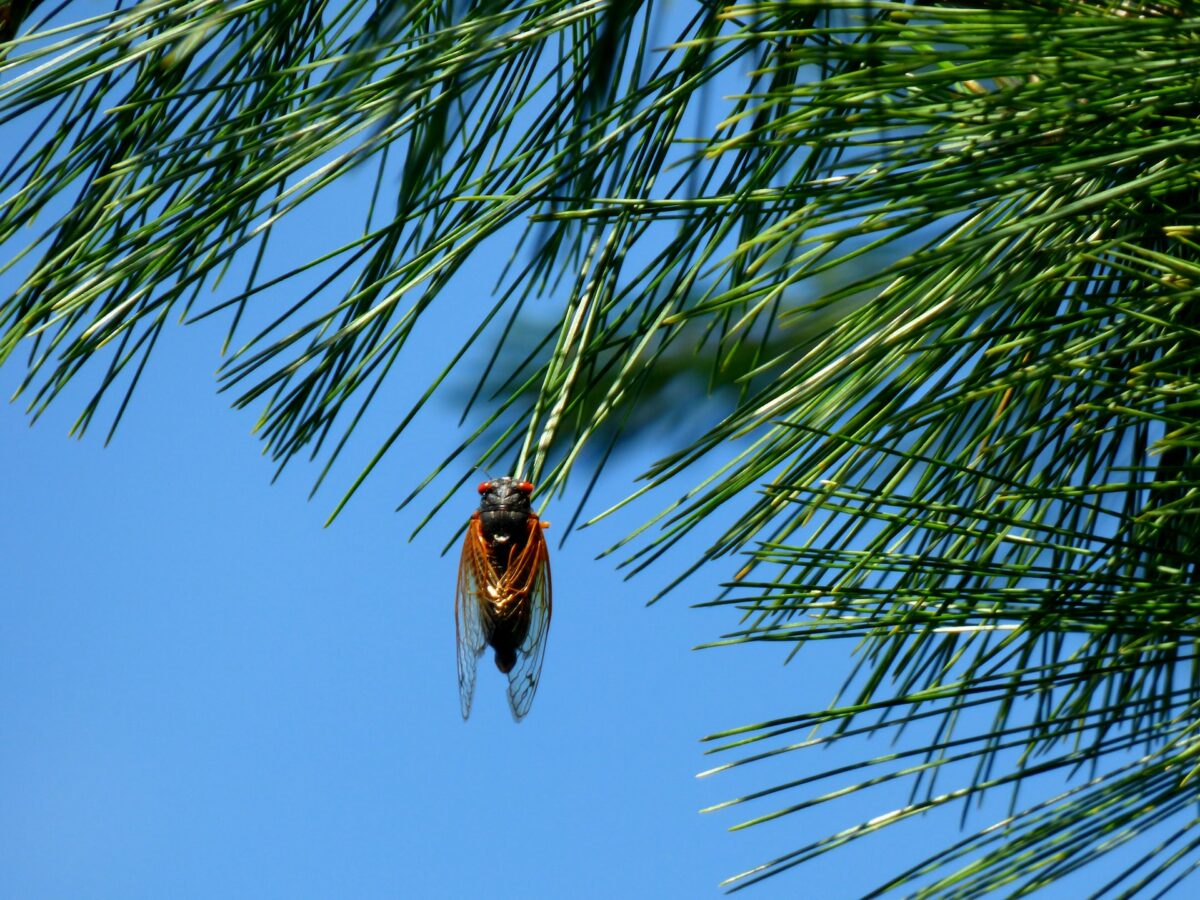
Cicadas and locusts have been associated with one another since colonial times. Periodical cicadas were a common sight throughout the early colonists’ agricultural activities. This particular species of cicada was unique to North America.
Periodical cicadas were unknown to the colonists up until that point. Therefore, they were unable to categorize them. However, they were aware of the biblical locust plagues, and therefore, they believed the cicadas to be locusts. It was probably due to the fact that both might appear in large numbers.
What Are Locusts?
Locusts belong to the Acrididae family. In terms of appearance, they resemble grasshoppers. Their color remains green until they reach the swarming stage. They eat various leafy plants, soft plant components, and grasses. Sometimes they also eat the remains of insects, but only when fresh leaves are scarce. A single female locust can lay between 95 and 158 eggs. On the other hand, a gregarious female locust is only capable of laying about 80 eggs.
What Are Cicadas?
Cicadas are members of the Cicadidae family, a group of insects. Cicadas are classified into two types: periodical and annual. The cicadas are usually two inches long and have large, transparent wings that are orange-yellow in color. They shield these insects from bacteria, water, and other elements. A cicada has a long lifespan during which they lay eggs on plants, unfortunately harming them as they do so. Their eggs develop into nymphs once they hatch and then move to underground burrows.
Comparing the Two:
Cicada vs. locust: Geographic Range
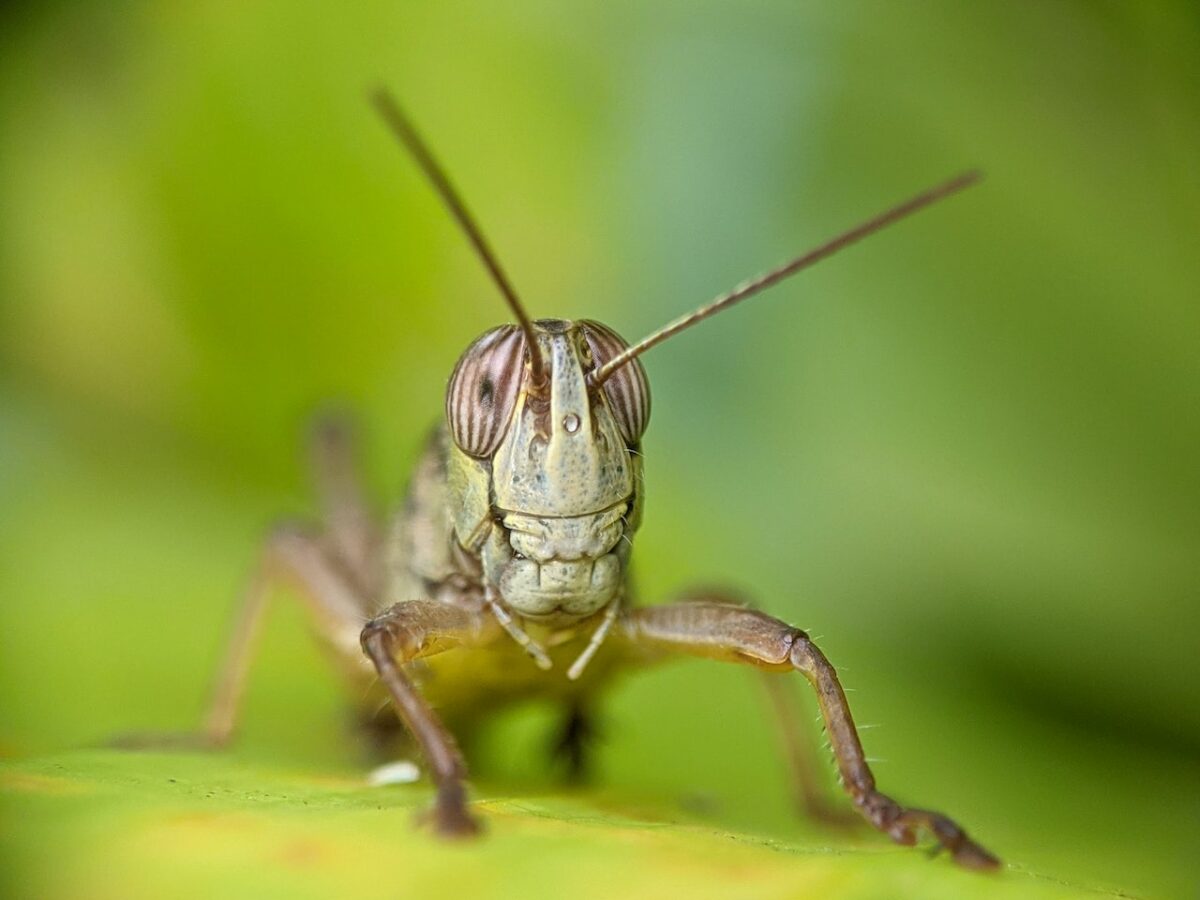
- Cicada:
Annual cicadas are found across all continents. However, periodic cicadas are only found in North America. They are most widespread in the eastern and central United States.
- Locusts:
Locusts are present throughout northern, western, and eastern Africa. They can also be found in the Middle East, South Asia, and Central Africa.
The locust’s swarming range is larger than its solitary range. Northern and Eastern Africa and the Middle East make up the swarming range. Additionally, it includes some of southern Asia.
Cicada vs. locust: Order Difference
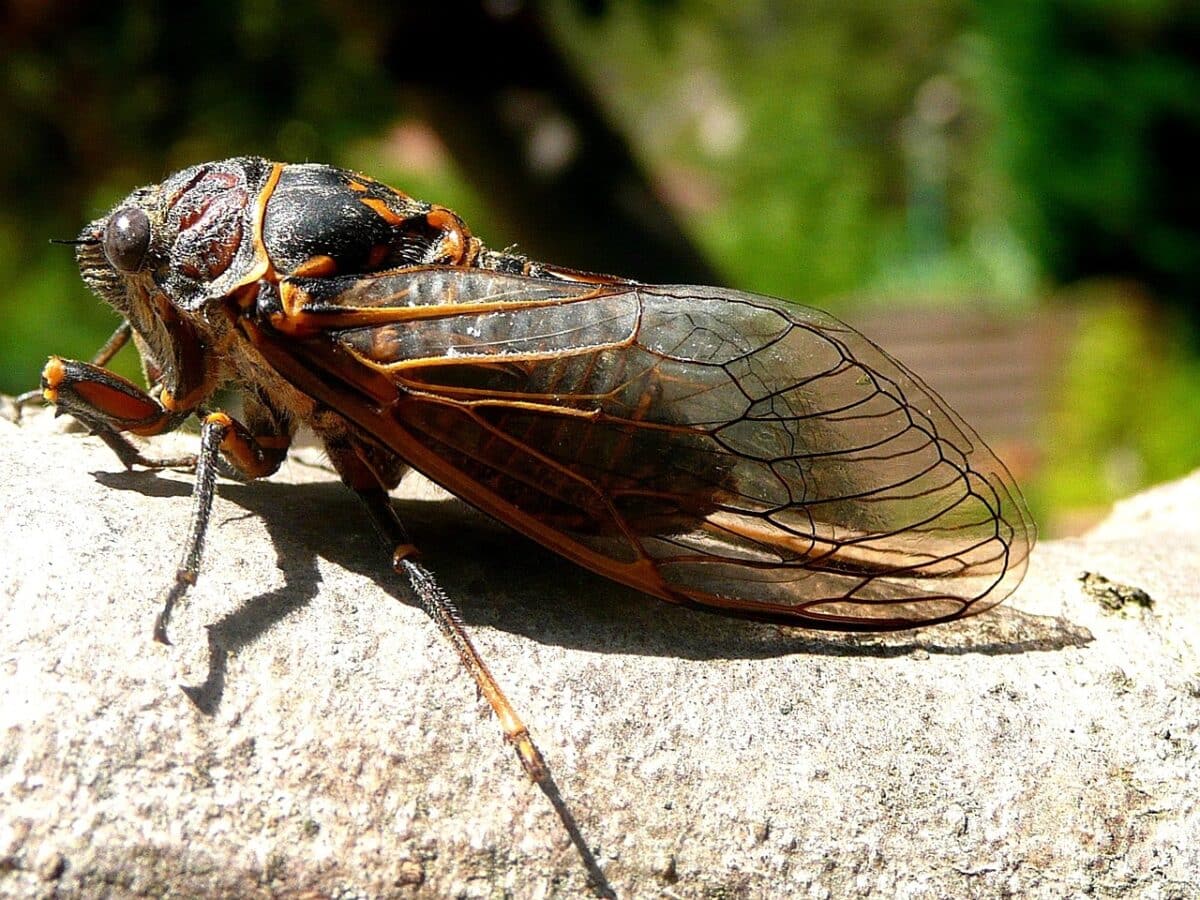
- Cicada:
Cicadas are a form of Hemiptera, or “True Bug.” Some people mistakenly believe they are relatives of crickets. However, this is untrue. Cicadas are similar to aphids despite their size, and aphids belong to the Hemiptera order as well.
- Locusts:
Locusts are members of the Orthoptera order. There are two suborders within this order: grasshoppers and locusts are on one side, whereas crickets make up the other side.
Cicada vs. locust: Family Difference
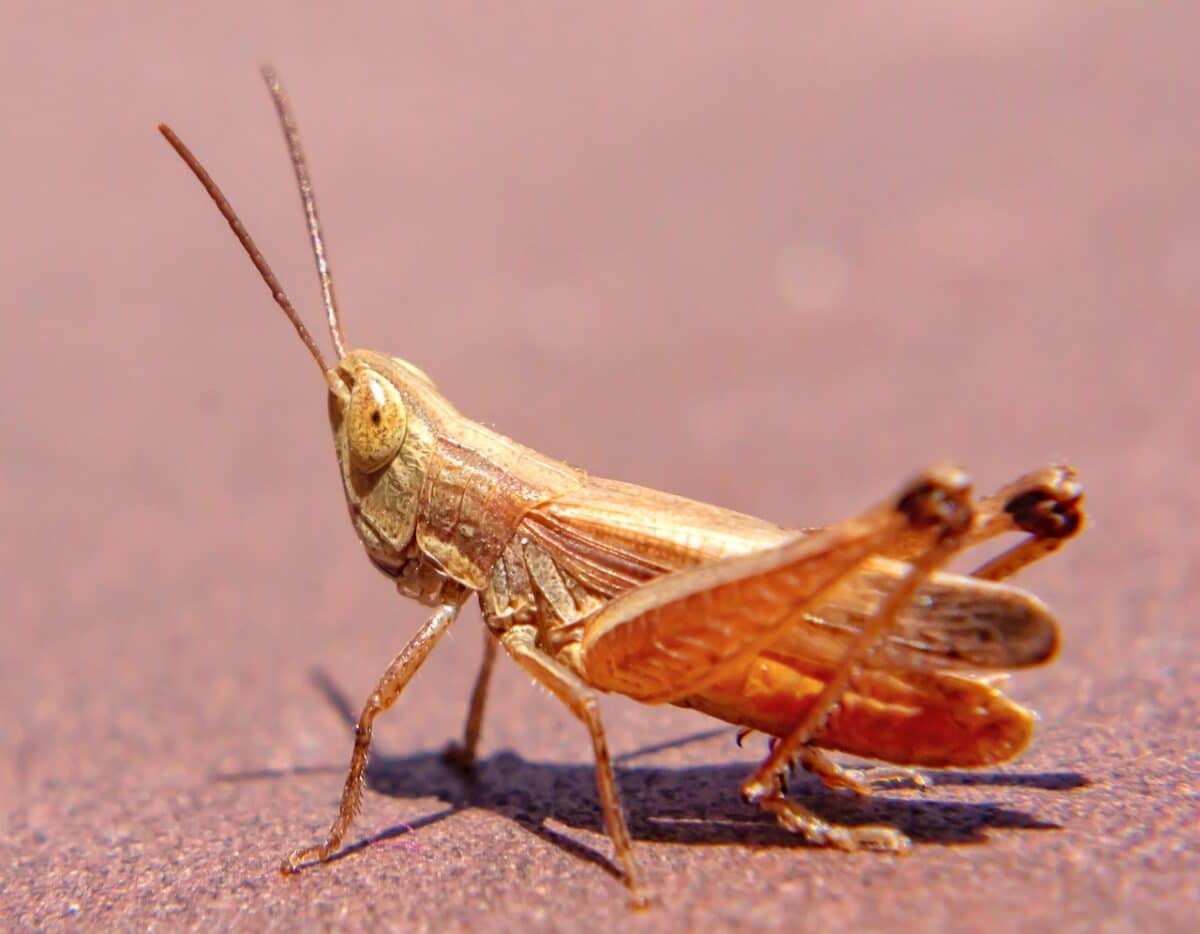
- Cicada:
Cicadas belong to the Cicadidae family. It includes insects that have two membrane-like pairs of wings, prominent eyes, and the ability to produce sound.
- Locusts:
Acrididae is a family of locusts, including any short-horned grasshoppers that are included in that family. They move and swarm in large numbers.
Cicada vs. locust: Diet Difference
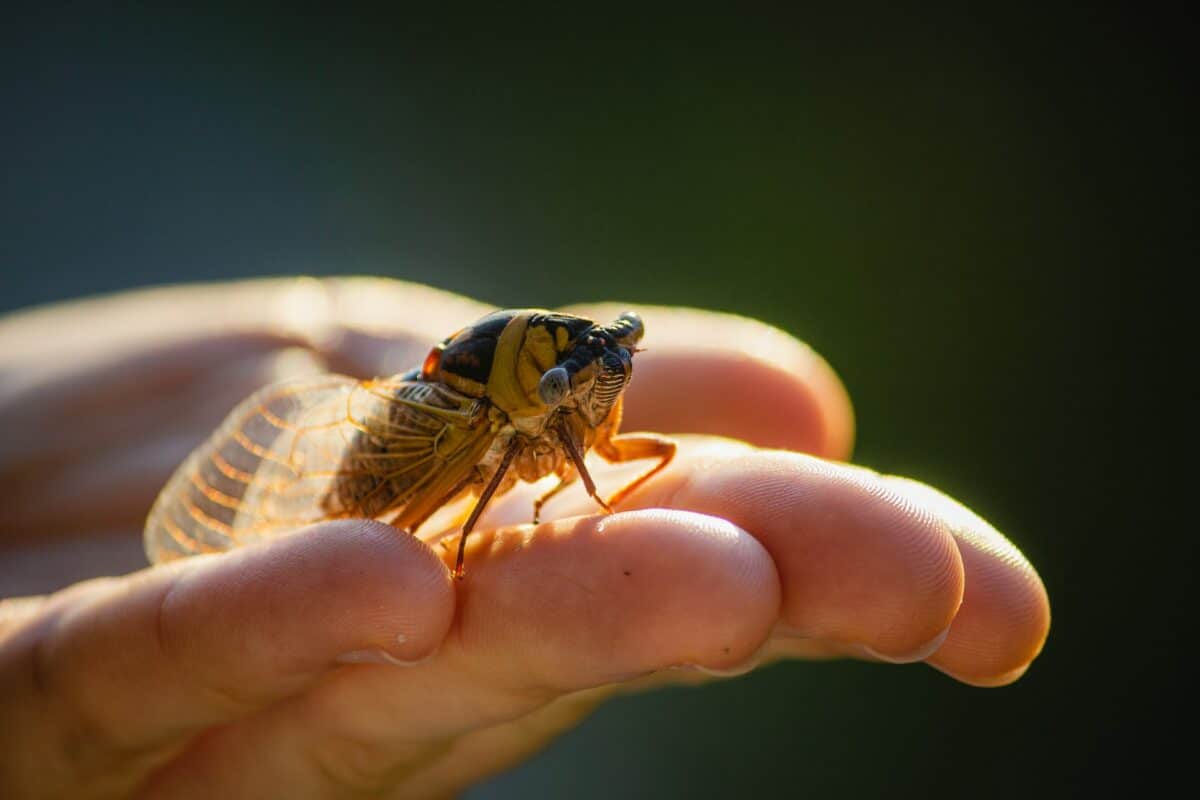
- Cicada:
Cicadas drink the liquid in all plant stems, roots, and branches.
- Locusts:
Locusts feed themselves with the leaves and any other softer parts of plants. One desert locust can eat nearly its whole weight in food each day.
Cicada vs. locust: Lifecycle Difference
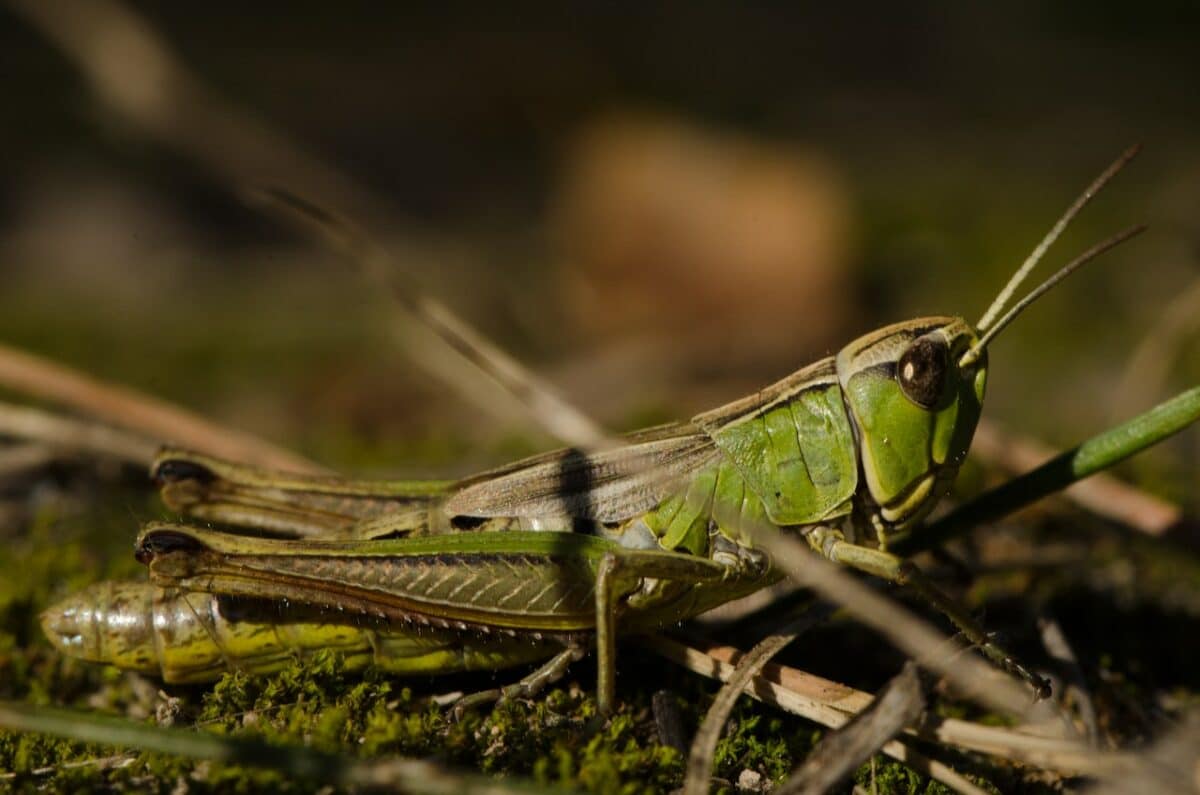
- Cicada:
The life cycle of the cicada is quite interesting. They lay their eggs on vegetation. When the eggs hatch, they transform into nymphs. Nymphs descend to the earth and burrow there, where they spend most of their lives.
A cicada nymph can live up to 17 years underground. They lose their outer shell after emerging. Additionally, they will pass away about six weeks after emerging once they have laid new eggs.
- Locusts:
Locusts have a considerably more basic life cycle. They simply deposit their eggs on the earth. Locusts typically live three to five months after hatching. However, they might lay as many as 1000 eggs during that time.
Cicada vs. locust: Physical Appearance
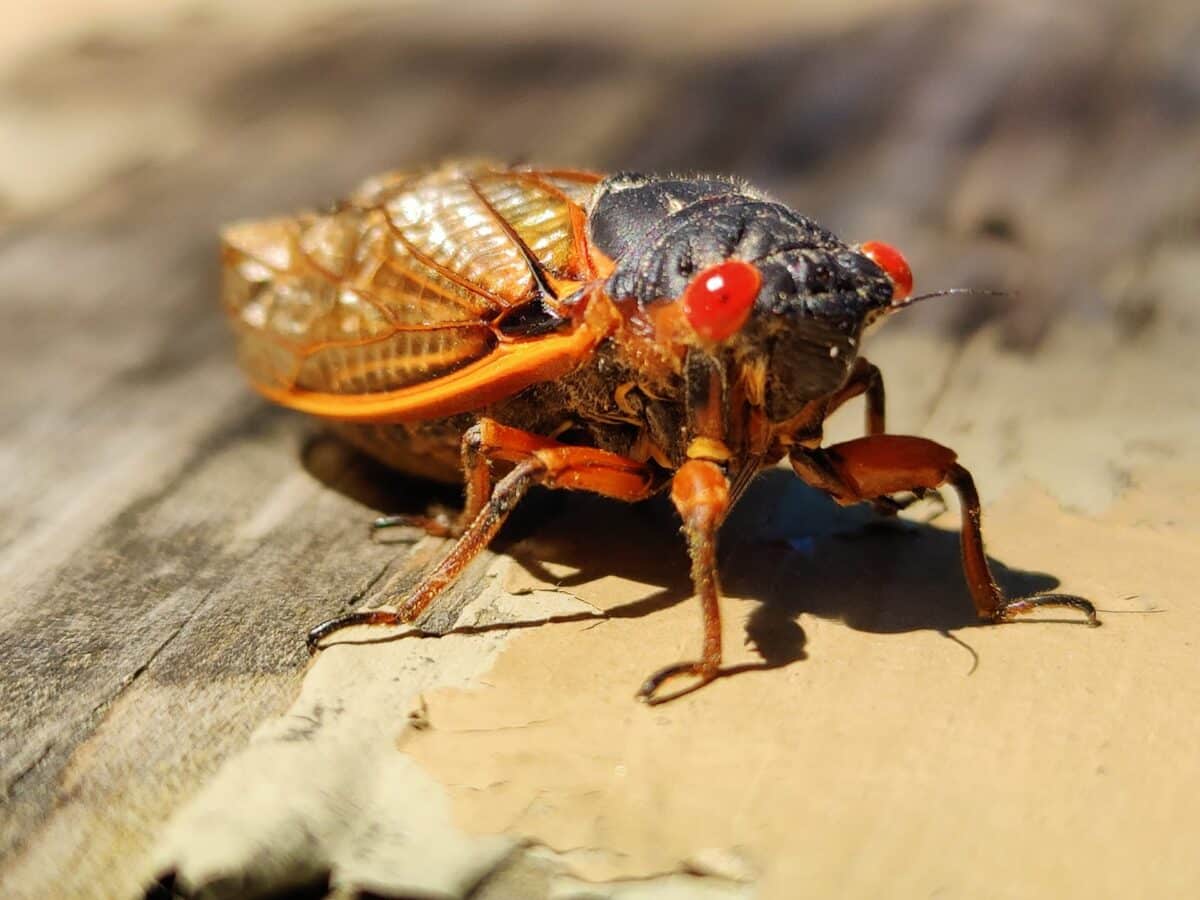
- Cicada:
Periodical Cicadas typically have black bodies and vivid red eyes. The annual species have stunning blue-green and black stripes. They are around the size of an average human thumb. They have translucent yellow-orange wings. These wings are longer than their abdomens’ bottoms and protect them from bacteria and water.
The males possess a set of tymbal-like organs. These organs vibrate with an extremely loud buzzing sound that reverberates through their hollow bodies. Cicadas may produce sounds that are up to 100 decibels loud.
- Locusts:
Grasshoppers and locusts share a striking similarity in appearance. Before entering their swarming phase, they frequently have a green color. During their swarming phase, their heads become smaller, turning brown and black with orange patches.
They have two long, angular antennas on the top of their heads. Moreover, they have long back legs that are always bent in half while at rest. These insects are much quieter. They make their sounds by rubbing two of their body parts together. The sound it makes a low buzz or occasionally a snapping sound.
Cicada vs. locust: Behavior Difference
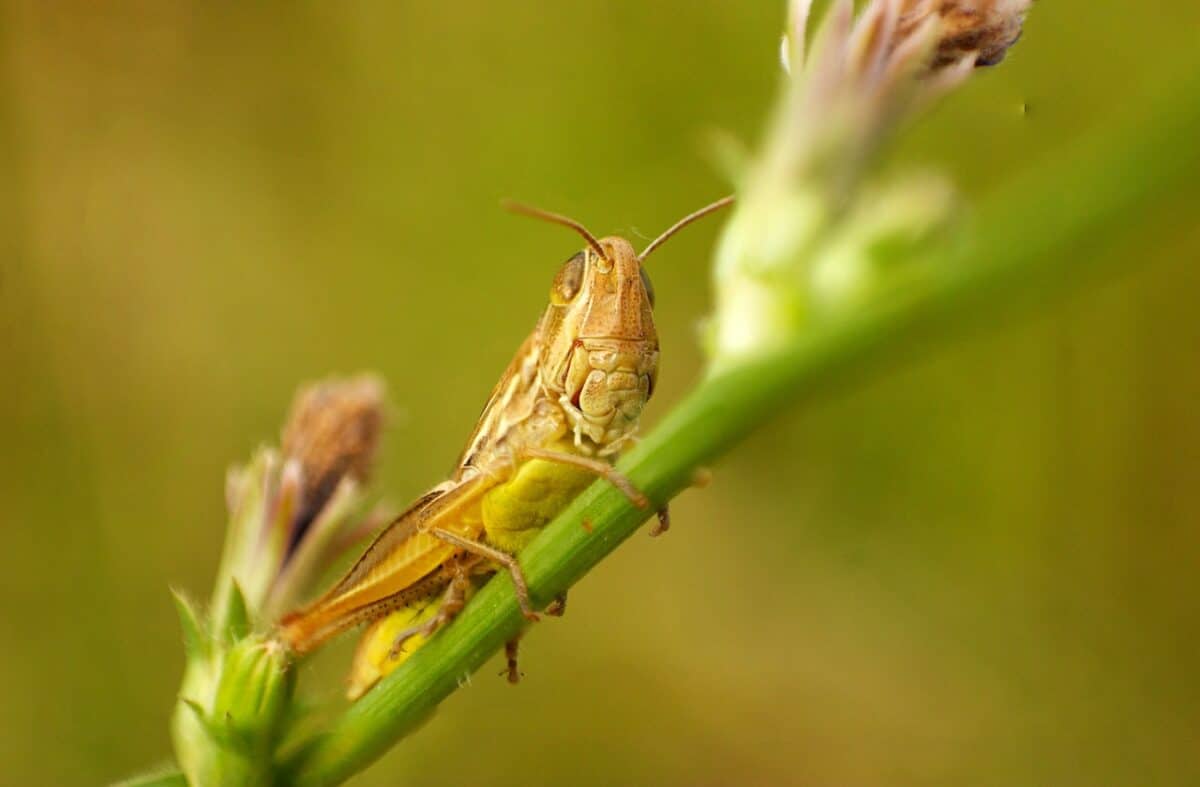
- Cicada:
The cicada doesn’t swarm. Compared to locusts, they are significantly less destructive to vegetation, especially crops. However, they have the potential to harm a number of planted trees, shrubs, and crops. It’s because females lay their eggs in twigs and branches.
Cicadas consume tree sap using a lengthy proboscis, both as nymphs and adults. They do not bite or sting to protect themselves. But if you let a cicada stay on you for too long, it can mistakenly think that you are a tree and might try to feed off of you.
- Locusts:
Locusts eat and destroy plants. Crops like pasture, vegetables, and grains may fall victim to these pests. This is especially the case when millions-strong swarms of locusts are present. Some locust species produce audible sounds, whereas some do not.
Cicada vs. locust: Reproduction
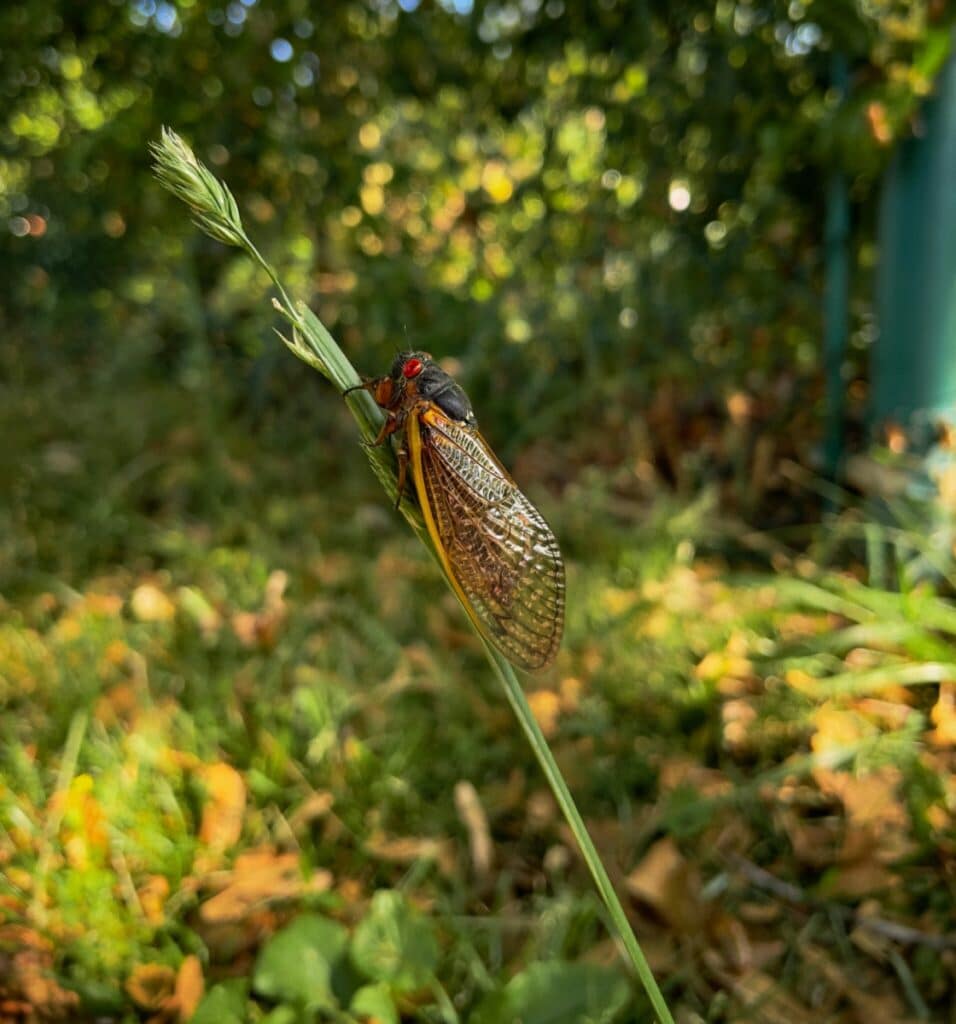
- Cicada:
Compared to locusts, the cicada reproduction system is complex. Females use their ovipositor to cut a slit in a twig after mating to lay their eggs here. The nymphs drop and burrow underground as soon as they hatch. As they develop, they consume the roots of deciduous trees.
Cicada males sing to attract females. As a result, they have three different courtship songs. They sing songs that are unique to their species. Other than those, they also have various other calls, including alarm calls. The loud songs of cicadas are well-known and extremely distinct. At times, it can be so loud that their tunes can cause damage to human ears.
- Locusts:
Contrary to cicadas, grasshoppers reproduce far more easily. They lay their eggs in the ground and then the nymphs emerge in the spring. The locust molts multiple times before reaching adulthood. The lifespan of locusts varies. However, they can have numerous generations in a single year.
Cicada vs. locust: Wingspan Difference
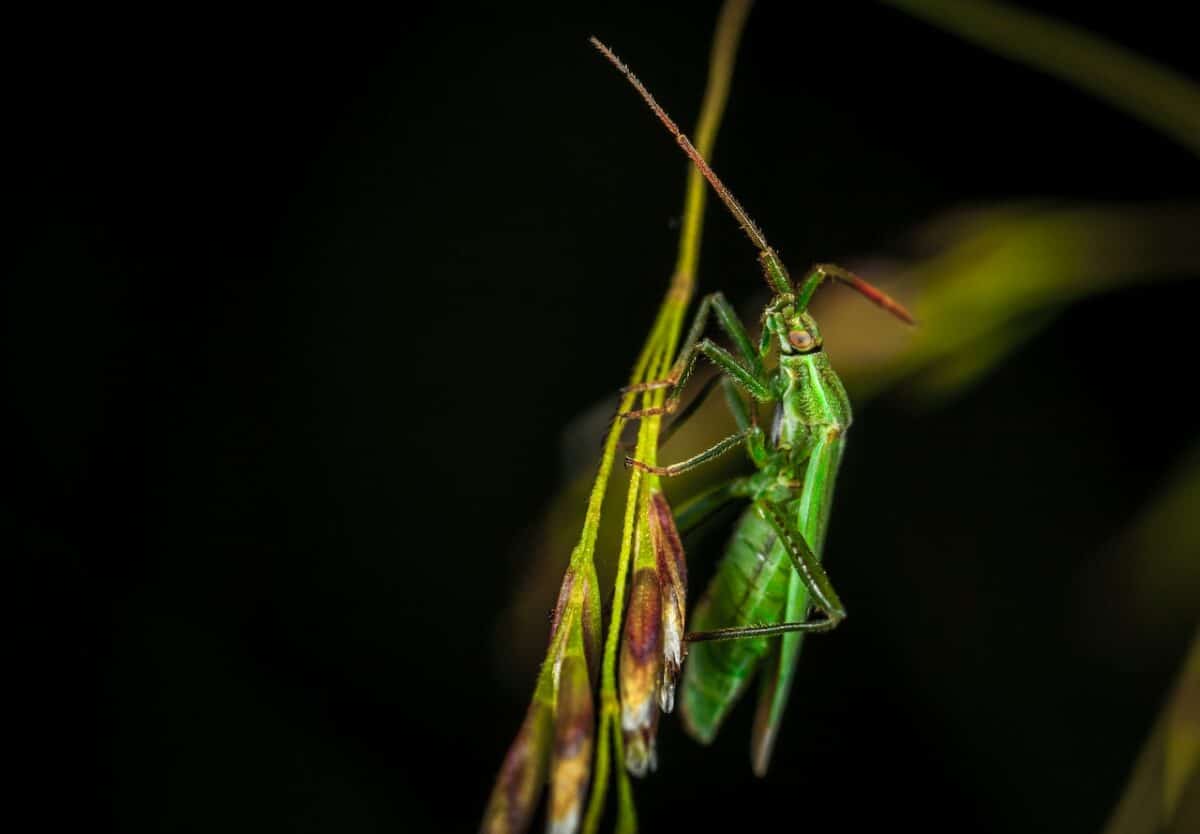
- Cicadas:
Adult cicadas can range in size from one to six inches in wingspan, depending on the species. The typical wingspan of periodic cicadas is 3 inches (7.62 cm). The biggest cicadas in the world are called Malaysian Emperor cicadas, and their wingspan may reach 8 inches (20.3 cm).
- Locusts:
The most common species of locusts worldwide are the migratory ones. Males can reach a height of 1,4 to 2 inches. Meanwhile, females can reach 1,8 to 2,2 inches. Locusts typically have wingspans of 10 inches. As they transition from solitary to social, their wings might shift from green to grey in color.
Cicada vs. locust: Lifespan Difference
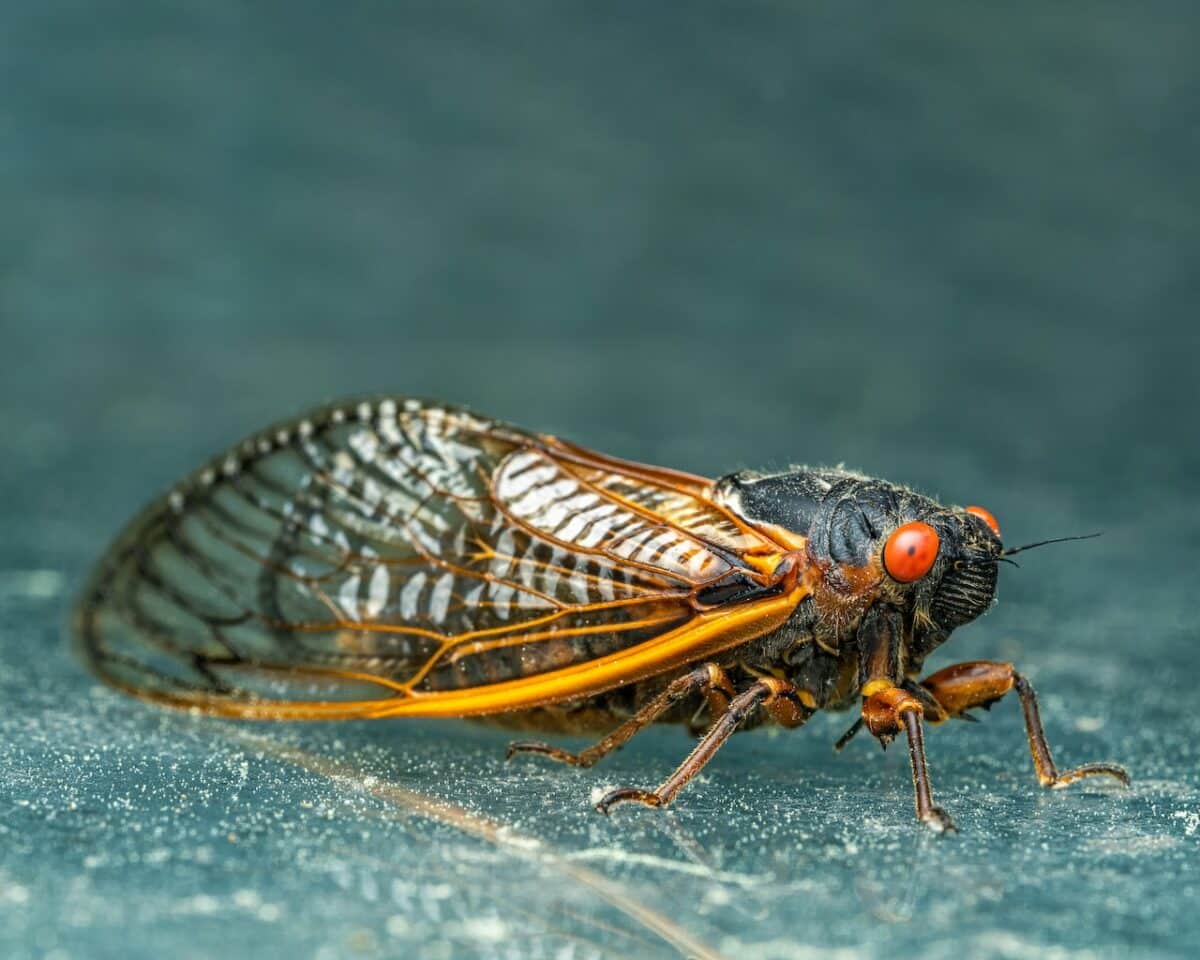
- Cicada:
Cicada eggs hatch into young called nymphs after 6–10 weeks. Annual cicadas live for around 2 to 5 years. Periodical cicadas live for 13-20 years, mostly as nymphs depending on the climate conditions. Typically, adults are visible from July through September, and nymphs are rarely seen out in the open.
- Locusts:
Desert locusts can live for two to three months, depending on the conditions. Eggs take 10 to 65 days to hatch, and nymphal phases can last anywhere from 30 to 40 days.
Adult development takes two to four months. However, some of them might mature in 9 months. Locusts may change their color and behavior during this stage.
Cicada vs. locust: Swarming Behavior
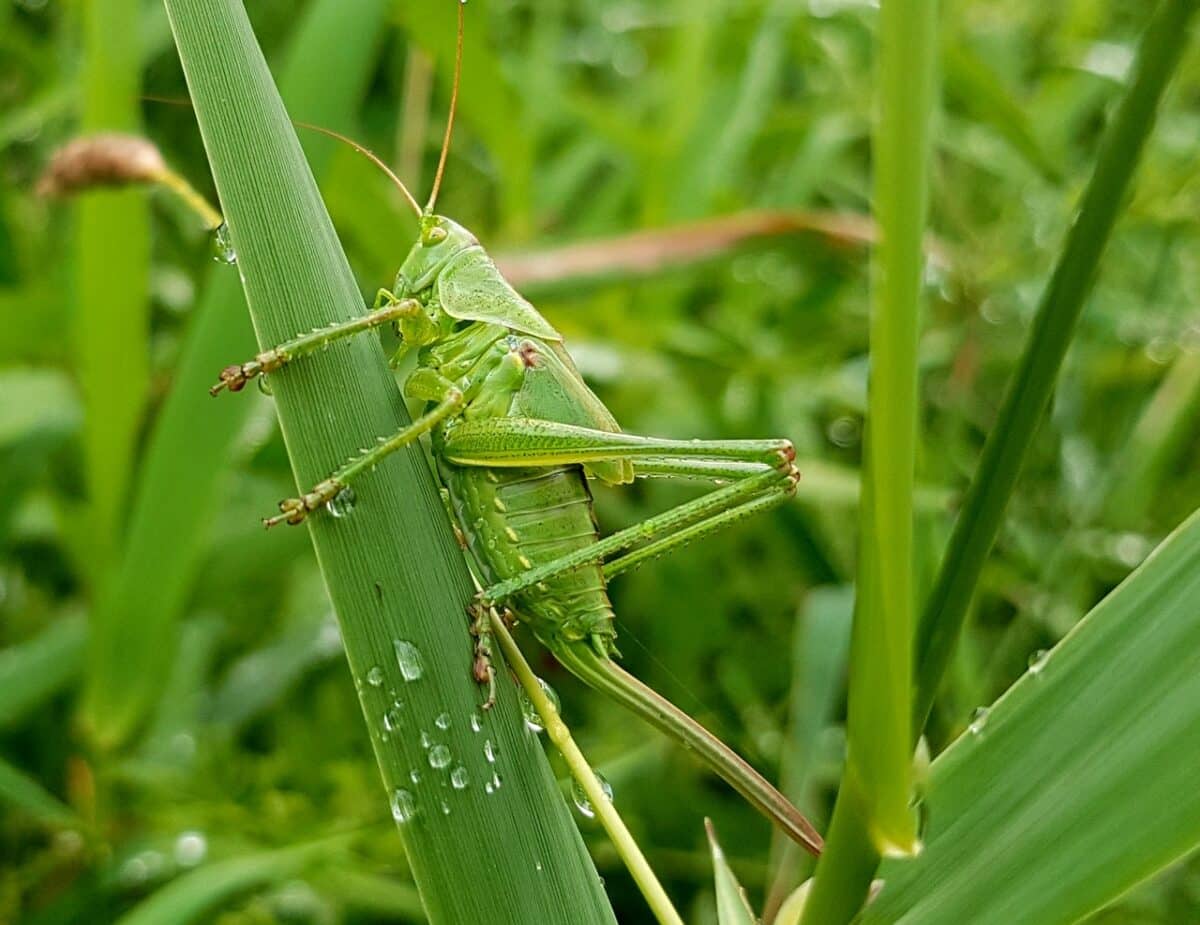
- Cicada:
On the one side, cicadas don’t swarm. Annual and periodic cicadas are two different forms of cicadas. Periodical cicadas don’t form swarms but typically appear in great numbers. It is more accurate to refer to a large group of cicadas as a cloud or epidemic.
Cicadas only eat plants. However, they do not pose the same harm to agriculture as locusts. They might harm planted vegetation. However, compared to what locusts can do, this damage is minimal.
- Locusts:
Locusts pose harm to crops when they swarm during their gregarious phase and often cause famines as a result of the destruction they cause. Most locusts live alone, but rainy spells make things different.
The increase in population is a result of the rainy weather. However, dry weather brings the insects closer together on the surviving foliage. According to a study, the locusts’ constant contact with their hind legs leads to their swarming behavior.
Cicada vs. locust: Sound/Noise Pattern
- Cicada:
The buzzing and clicking of locusts are quite noisy. They are produced by quickly contracting and relaxing muscles, which causes the tymbal-like structures of their bodies to shake. These noises are the mating calls made by males.
Each species of cicada has a distinctive mating sound. The males of some species of cicada will sing together. 120 decibels is the loudest it can get. Birds and other predators are also kept at bay by the noise.
- Locusts:
A quiet buzzing sound is produced when locusts rub their wings against one another or their bodies. When millions of them are flying by, this sound can be amplified. However, cicadas are much louder than locusts.
Cicada vs. locust: Size and Body Parts
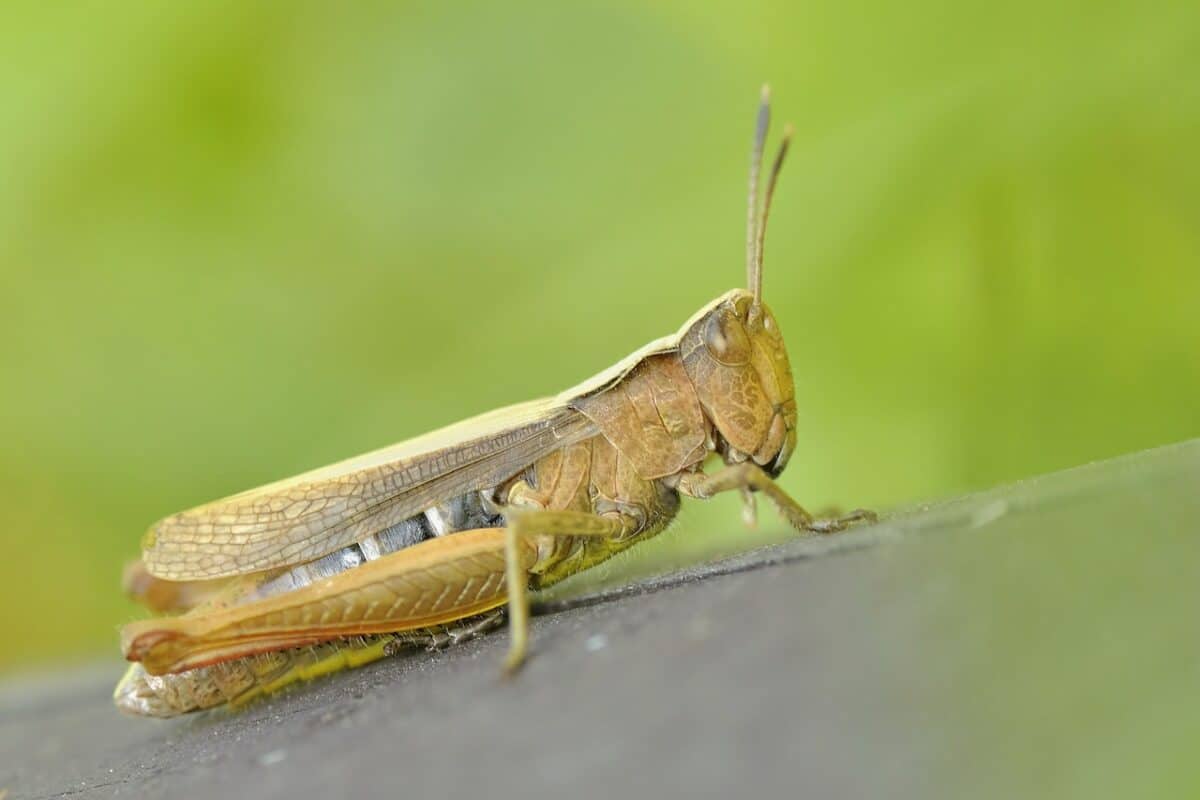
- Cicada:
Cicadas have a length of 0.75 to 2.25 inches. In order to ingest plant secretions, cicadas have a proboscis in their mouth. Cicadas have three identically sized pairs of legs and their wings are very long and translucent.
- Locusts:
The length of a locust ranges from 0.5 to 3 inches. They have a single, lengthy set of hind legs and two pairs of wings. Also, chewing mouth components are seen in locusts.
Interesting Facts:
Are Cicadas Dangerous?
Cicadas are not at all dangerous. They don’t sting or bite people, and they don’t spread disease. While nymphs drink from tree roots, adult cicadas feed on tree branches. However, they do not seriously harm trees. Adults only cause harm when they use their pointed ovipositor to lay eggs on branches.
Are Locusts Dangerous?
There is no solid scientific proof of locusts stinging or biting people. Additionally, they are disease-free. Locusts are thought to be edible and are known to be high in protein. Following the locust outbreak, some East African people ate them. However, pesticide-killed locusts can be extremely dangerous.
Which one is the Most Feared by Humans?
Locusts and cicadas are not physically hazardous to humans. But, locusts pose a threat to human agriculture in some cases. A locust has a voracious appetite, and a locust swarm can cover an area of about one-third of a square mile. It can eat enough food to nourish 35,000 people.
Africa experienced the greatest locust outbreak ever recorded between 2003 and 2005. Crop damage totaled $2.5 billion in all. Many nations do not adequately prepare to resist the plagues when they do occur. It is because locust outbreaks are unpredictably spaced apart by years or decades.
How Do You Tell a Male Cicada from a Female?
Male cicadas have two tymbals, their principal difference from female cicadas. On each side of the abdomen, there is a tymbal composed of thin membranes. When male cicadas rapidly collapse the tymbals inward and outward, they make a noise.
However, these tymbals are not seen in females. When several male cicadas sing simultaneously, the noise gets extremely loud. It may be so loud as to impair hearing. Female cicadas react by flapping their wings.
When Do Cicadas Emerge From the Ground?
Cicadas will emerge from the earth as adults after two to seventeen years as nymphs. It depends upon the species. Adults of annual cicadas emerge every year, and they go by the name “dog day” cicadas as well. They occur most frequently in the latter days of the summer. These cicadas have a greenish hue and are typically heard rather than seen.
The periodic cicadas are the ones that are most frequently confused with locusts. After several years below ground, the adults suddenly come to the surface. In the spring, they appear earlier due to the soil’s warmth, eight inches below the ground’s surface.
How Can You Eliminate Cicada and Locusts from your House?
Cicada killer wasps are useful for getting rid of cicadas. One could also use a garden hose or a fly swatter. Metarhizium anisopliae is likewise an effective bio-controlling agent and is very useful for eliminating locusts.
The Final Say:
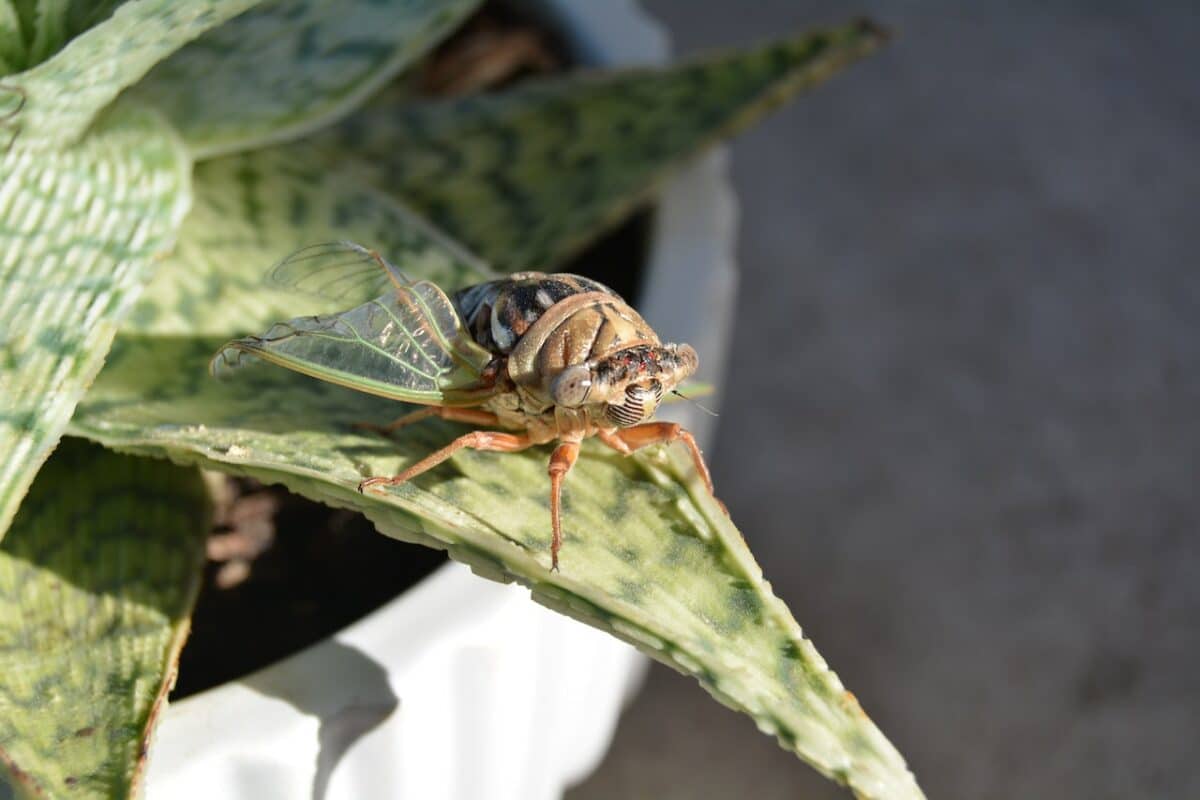
Summary:
| 1- | Cicadas commonly inhabit the United States, whereas locusts occur outside North America. |
| 2- | Locusts travel in swarms and can destroy crops, while cicadas are much less destructive when they feed. |
| 3- | The cicada nymph can live up to 17 years underground after hatching, while the total lifespan of a locust is typically 3-5 months long. |
| 4- | Cicadas are generally solitary, while locusts can switch from solitary to gregarious as they increase their population. |
| 5- | Cicada nymphs live below ground, whereas locust nymphs occupy plants. |
| 6- | Cicadas fly clumsily, whereas locusts fly fast at around 16-19 km per hour. |
Locusts and cicadas are different types of noise-making insects. The cicadas and locusts resemble grasshoppers and crickets, respectively.
The behavior of locusts during their swarming phase is the primary distinction between locusts and cicadas. Unlike locusts, cicadas do not swarm. And unlike locusts, cicadas do not destroy and devour crops. They both tend to appear in huge numbers and are extremely loud. Both locusts and cicadas are non-hostile towards people.
Thank you for reading this article! If you want to go on another insect-learning-adventure hop on over to our article on What Crickets Eat.
- The Most Adorable Footage of Baby Wolves in Minnesota - April 15, 2024
- Man Teaches Bald Eagle to Play Fetch - April 15, 2024
- Mother Buffalo Tries to Save Baby From Komodo Dragons - April 14, 2024

